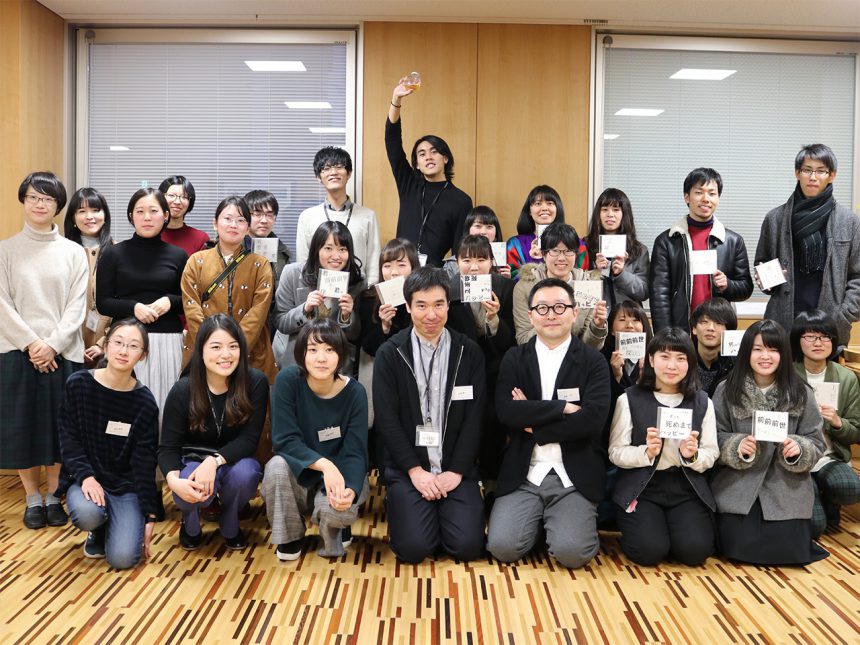
The Kansai team's main event was held on February 18th. Although their meetings were less frequent than those of the Tokyo team, we would like to share with you a fulfilling day for them, who have been working hard for the past six months.
A fulfilling three hours spent choosing typefaces!
The Kansai team's event concept was "Design work from the perspective of typefaces." They held talks and workshops centered around the question of how to choose fonts to accurately convey information to people.
The event took place at Morisawa's headquarters in Osaka, and began at 2pm with a packed house.
The guests were Professor Ichiro Funakoshi (center right in the photo), Associate Professor of Visual Design at Kyoto City University of Arts, and Professor Toru Sakano (center left in the photo), Associate Professor of Visual Design at Kanazawa College of Art. After an introduction by the two, the talk session began.
The talk was moderated by members of the Kansai Moripass Club, who asked the two professors questions on a theme-by-theme basis. Up until today, each member had interviewed professors from their own universities with the same questions, and the talk unfolded while weaving in their answers.
・Kobe Design University Professor Komaki Hagiwara
https://fontswitch.jp/post/2287
・Professor Junpei Oe, Kobe Design University
https://fontswitch.jp/post/2317
・Professor Ryo Eto, Osaka Kyoiku University
https://fontswitch.jp/post/2355
・Professor Eiji Marui, Kyoto University of Art and Design
https://fontswitch.jp/post/2322
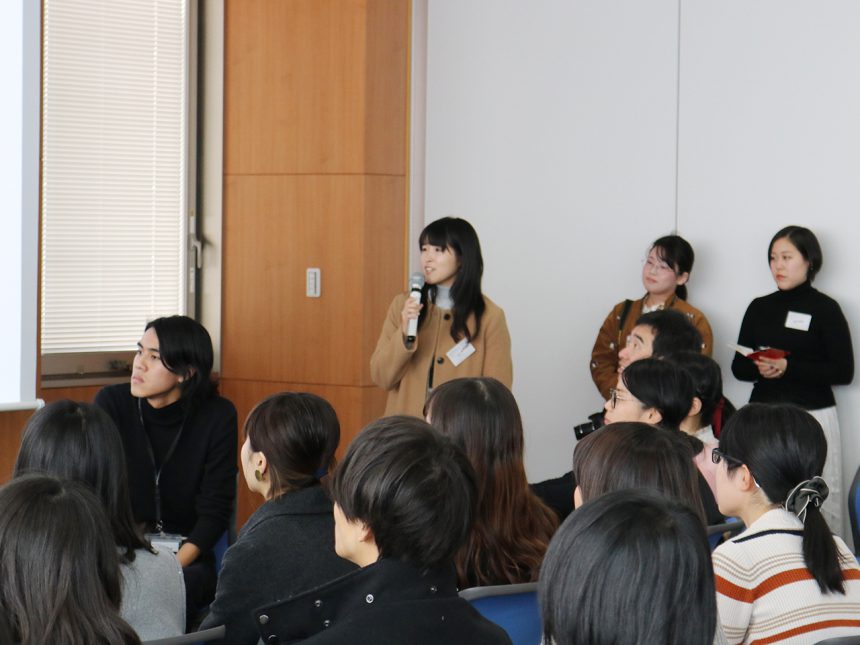
Your favorite font becomes the color of your design
The first question was, "What was the moment that turned your font switch on?" Professor Funakoshi answered, "When I first started using a Mac computer in college, I was exposed to many fonts and I was struck by how rich the characters were!"
Professor Sakano replied, "When I read a book by Helmut Schmidt, who designed Pocari Sweat and Calorie Mate, I became interested in how beautiful letters are."
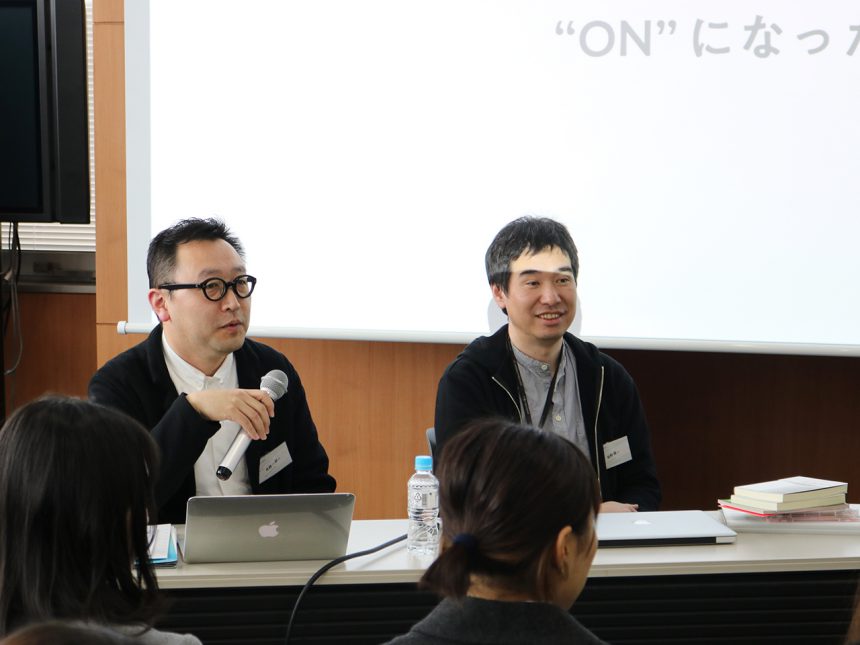
On the theme of "The Power of Letters," Professor Funakoshi spoke about the expressions of letters, saying, "Even in calligraphy, letters written scribbled with a thick brush give a sense of anger, while letters written smoothly with a thin brush give a sense of elegance. It's the same with printed letters, and I think it's important to have that kind of awareness."
Professor Sakano taught us that "What's important is not the form of the letters, but how they look when put together in a sentence. For example, I think the white areas between letters where there is no ink are also part of the 'design of the letters.'" He taught us that even the parts other than the unwritten letters have power.
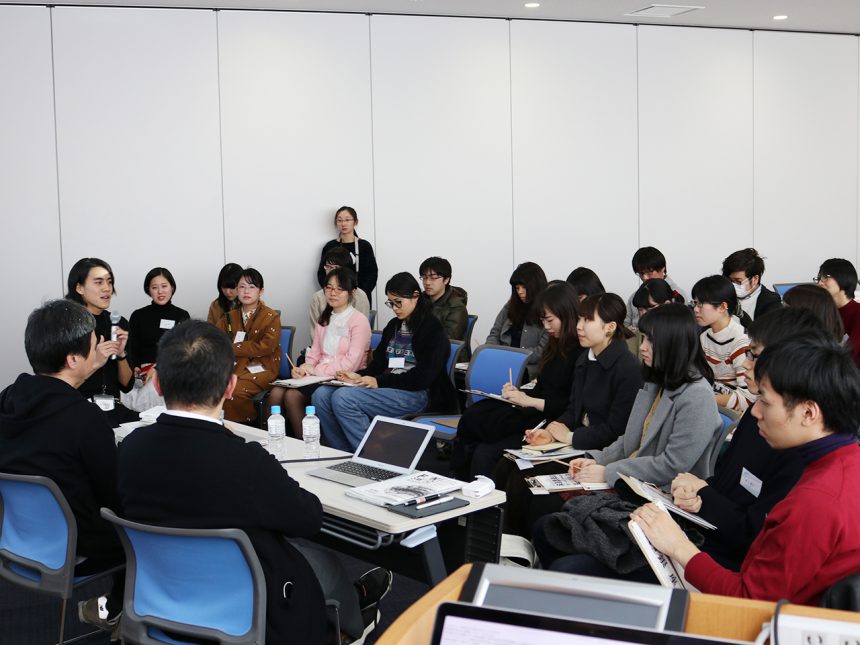
Professor Funakoshi also gave some encouragement to the participants. He emphasized the importance of intuition when choosing a typeface, saying, "I think that the typeface you like will become the color of your own design. And once you have the sense that 'this typeface and this size look good,' you should be able to become an advanced designer."
Professor Sakano continued, "More than the design or meaning of the letters, what's important is what you do with them. Once you get used to a typeface, it becomes a well-used and interesting tool."
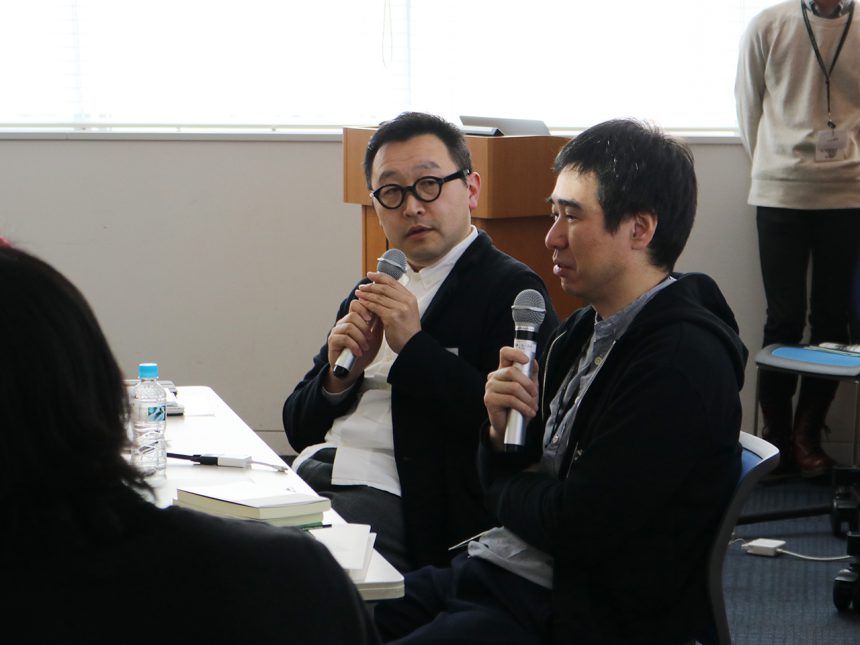
The session was lively and full of opinions, with participants asking questions and the professor and moderator posing questions to the participants.
Using phrases from famous songs, choose fonts with your own imagination
After the talk, it's finally time for the workshop.

Entitled "One Phrase Jacket," the participants were divided into three groups and created CD jackets using phrases from famous songs: "Let's Stay Happy Forever and Forever Until We Die" (Ulfuls' "Banzai"), "I Started Looking for You from Your Zenzenzense" (RADWIMPS' "Zenzenzense"), and "Let's Look Up and Walk So That Tears Don't Fall" (Sakamoto Kyu's "Ue o Muite Arukou").
(JASRAC license number: 1800750-801)
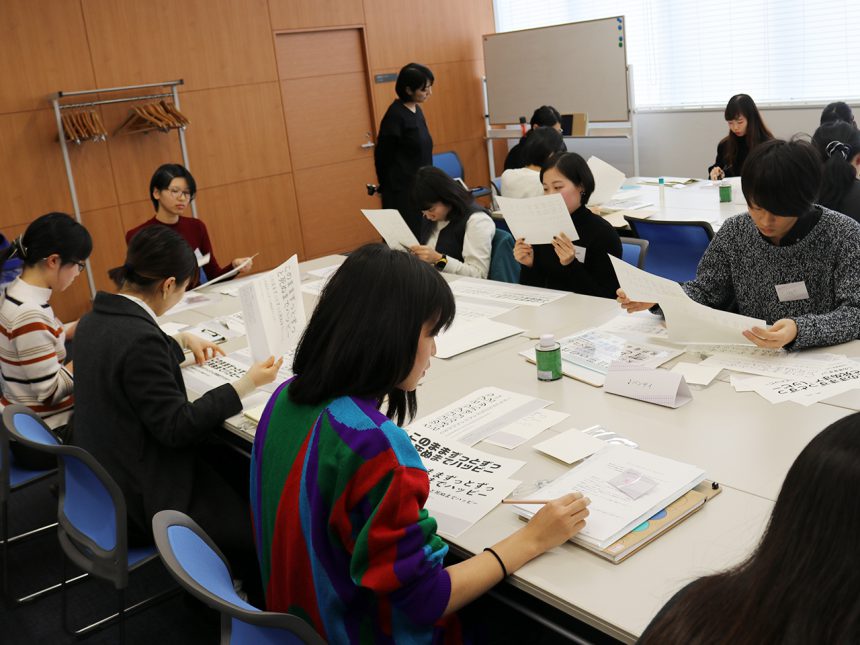
Before starting the production, Professor Sakano advised, "First, listen to the song carefully and think about the meaning of the lyrics. This will help you decide on the size and font of the letters," while Professor Funakoshi gave the following advice: "Feel free to think about the spacing and layout of the letters within the box." It seemed that the participants were looking forward to seeing a variety of ideas.
The materials distributed were 10 different fonts and four sizes. Participants first cut out two or three types of material that they thought best suited the image of the lyrics, then carefully considered each one, compared the fonts of the materials while thinking about the image, or took a photo of the temporary materials and then changed the font size or letter placement, allowing each participant to freely choose a font.
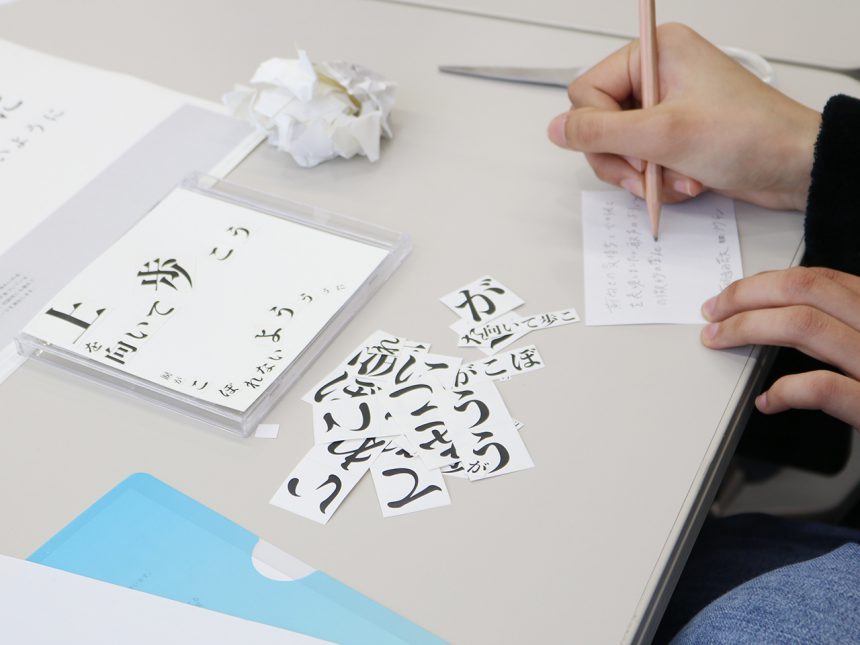
Some people struggled with the size after choosing a font. Even a slight difference in size can completely change the overall impression and the message being conveyed. Feeling the difficulty of communicating with others, the participants worked seriously on choosing typefaces and layouts.
Comments from the teachers and then the long-awaited social gathering
Once completed, the students wrote a description of the CD jacket they had made in the caption. At the end, Professor Funakoshi and Professor Sakano each picked out a jacket that caught their eye and gave a brief critique.
After the workshop, we visited Morisawa Square, a showroom at the Morisawa headquarters in Osaka, followed by a fun party. Over delicious food and drinks, participants asked Professor Funakoshi and Professor Sakano questions about their student days and work, and deepened their interactions with each other.

Some participants also went to the teachers to receive individual critiques of the works they had created in the workshop. The teachers were sympathetic and helpful as participants asked serious questions about what they were trying to express by choosing this font, and what was lacking in their own work. Today's event was packed with content from start to finish, and when it came to an end, the participants left with looks of satisfaction on their faces.
Today's event was a success thanks to a clear division of roles, including not only hosting but also presenting interviews, taking photos, participating in workshops, and guiding participants. The Kansai Moripass Club was a small but elite group, but everyone worked together to make it a wonderful event.
We will also be uploading individual interviews conducted immediately after the event at a later date, so please look forward to those as well.

